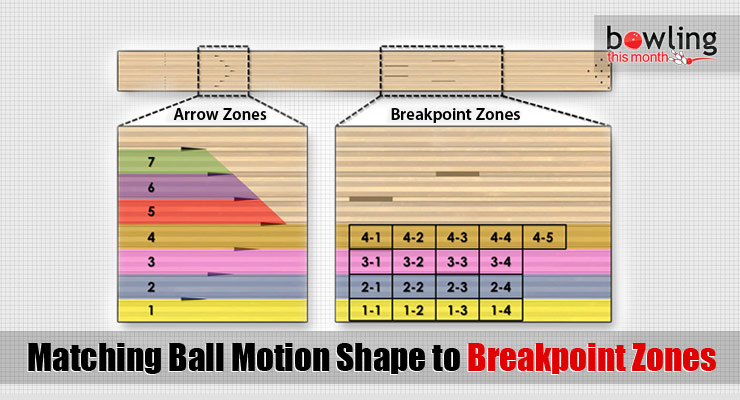Article Contents
- 1. Ball motion shape
- 2. Breakpoint grid
- 3. Lateral displacement and front-to-back distance
- 4. Shape matching considerations
- 5. Moving shape up and down +/-1
- 6. An alternative way to use this model
- 7. Conclusion
Note: This article is only available to Bowling This Month subscribers.
Last year, I published a lane play planning concept to help define which practice manipulation zone (PMZ) should be used during practice to open up the lane. Pattern length minus 31 works well, but it has limitations in sport pattern structure.
With the process I refer to as pattern decomposition, one can more accurately define where to play the lanes as well as where the exit point and breakpoint should be. For example, on the fresh, some sport long patterns play better in medium play zones while other long patterns play more inside. Similarly, some medium patterns can be played more outside and others more inside.
Once you have the practice manipulation and breakpoint zones, you need to conceptualize which ball motion shapes will provide the most margin of error based on where the ball will make a move toward the pocket. This is a function of the defining the breakpoint location in terms of both length (front-to-back) and lateral position (side-to-side).
This breakpoint shape match system is best intended for off-lane reflection, on-lane practice implementation, and pre/post competition reflection. The goal is to understand what shapes work best on specific environments. Through this, the process becomes more automatic, helping you make better lane play decisions and utilize your equipment better.
Ball motion shape
As you can see in the below graphic, I define six ball motion shapes: 1, 1+, 2, 2+, 3, and 3+ (only 1, 2, and 3 are explicitly shown). This is an easy way to define when, where, and how fast the ball transitions from hook to roll. Once you understand the needed shape, you can meet with your local IBPSIA pro shop professional who can ...
Already a premium member? Click here to log in.


 (Only
(Only 